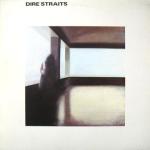 Reviews and Commentaries for Dire Straits’ Debut
Reviews and Commentaries for Dire Straits’ Debut
Hot Stamper Pressings of the First Album Available Now
What separates the best copies from the merely good ones? In a word, ENERGY. The best copies make this band sound like they are on fire, ready to go head to head with the world, fiercely proud of the new sound they’ve created.
The not-so-good copies make Dire Straits sound the way Dire Straits usually does — laid back and well under control, perhaps even a bit bored with the whole affair. The best copies show you a band that wants to rock with the best of them, and can.
Back in 2007 or thereabouts we wrote about this subject after playing a particularly lively copy of Revolver:
At the risk of being definitive about things that are better left ill-defined, I would say that the Number One quality we look for in a pressing is the element of Life or Energy. We can put up with many shortcomings, including even some tonality problems, but when a record fails to convey the spirit and enthusiasm of the musicians, it’s pretty much over.
Water Of Love and Sultans of Swing on a Hot Stamper copy have the kind of Demo Disc sound that will have your audiophile friends drooling and turning green with envy. We can’t all afford $100,000 turntables, but when you have a record that sounds this good, you don’t need one! This record makes it sound like you have 100k in your rig, whether you do or not.
Size and Space
One of the qualities that we don’t talk about on the site nearly enough is the SIZE of the record’s presentation. Some copies of the album just sound small — they don’t extend all the way to the outside edges of the speakers, and they don’t seem to take up all the space from the floor to the ceiling. In addition, the sound can often be recessed, with a lack of presence and immediacy in the center.
Other copies — my notes for these copies often read “BIG and BOLD” — create a huge soundfield, with the music positively jumping out of the speakers. They’re not brighter, they’re not more aggressive, they’re not hyped-up in any way, they’re just bigger and clearer.
We often have to go back and downgrade the copies that we were initially impressed with in light of such a standout pressing. Who knew the recording could be that huge, spacious and three dimensional? We sure didn’t, not until we played the copy that had those qualities, and that copy might have been number 8 or 9 in the rotation.
Think about it: if you had only seven copies, you might not have ever gotten to hear a copy that sounded that open and clear. And how many even dedicated audiophiles would have more than one or two clean British copies with which to do a shootout? These records are expensive and hard to come by in good shape. Believe us, we know whereof we speak when it comes to getting hold of early British pressings of Classic Rock albums.
One further point needs to be made: most of the time these very special pressings just plain rock harder. When you hear a copy do what this copy can, it’s an entirely different – and dare I say unforgettable — listening experience.
Rhett Davies Is Da Man
You may have seen our album locator for Rhett Davies. He’s one of our favorite recording engineers, the man behind Taking Tiger Mountain, 801 Live and Avalon to name just a few of his most famous recordings, all favorites of ours of course.
Well, we just have to say that until something better comes along, THIS IS HIS MASTERPIECE. It has to be one of the best sounding rock records ever made, with Tubey Magic mids, prodigious bass, transparency to beat the band, and freedom from hi-fi-ishness and distortion like few rock recordings you have ever heard.
The man may be famous for some fairly artificial sounding recordings — Eno’s, Roxy Music’s and The Talking Heads’ albums come to mind — but it’s obvious to us now, if it wasn’t before, that those are entirely artistic choices, not engineering shortcomings.
Rhett Davies, by virtue of the existence of this album alone, has proven that he belongs in the company of the greatest engineers of all time, right up there with the likes of Bill Porter, Ken Scott, Stephen Barncard, Geoff Emerick, Glyn Johns and others too numerous to mention.
The Tubey Magic Top Ten
You don’t need tube equipment to hear the prodigious amounts of Tubey Magic that exist on this recording. For those of you who’ve experienced top quality analog pressings of Meddle or Dark Side of the Moon, or practically any jazz album on Contemporary, whether played through tubes or transistors, that’s the luscious sound of Tubey Magic, and it is all over Dire Straits’ Debut.
Ranked strictly in terms of Tubey Magic I would have to put this album on our list of Most Tubey Magical Rock Recordings of All Time, right up there with, in no particular order:
- Sgt. Pepper (1967),
- Meddle (1971),
- Dark Side of the Moon (1973),
- Dire Straits Self-Titled (1977, and clearly the outlier in this group),
- The Eagles Self-Titled (1972),
- Tommy (1969),
- The Doors Self-Titled (1967),
- Ziggy Stardust (1972),
- Tumbleweed Connection (1970),
- A Space in Time (1970)